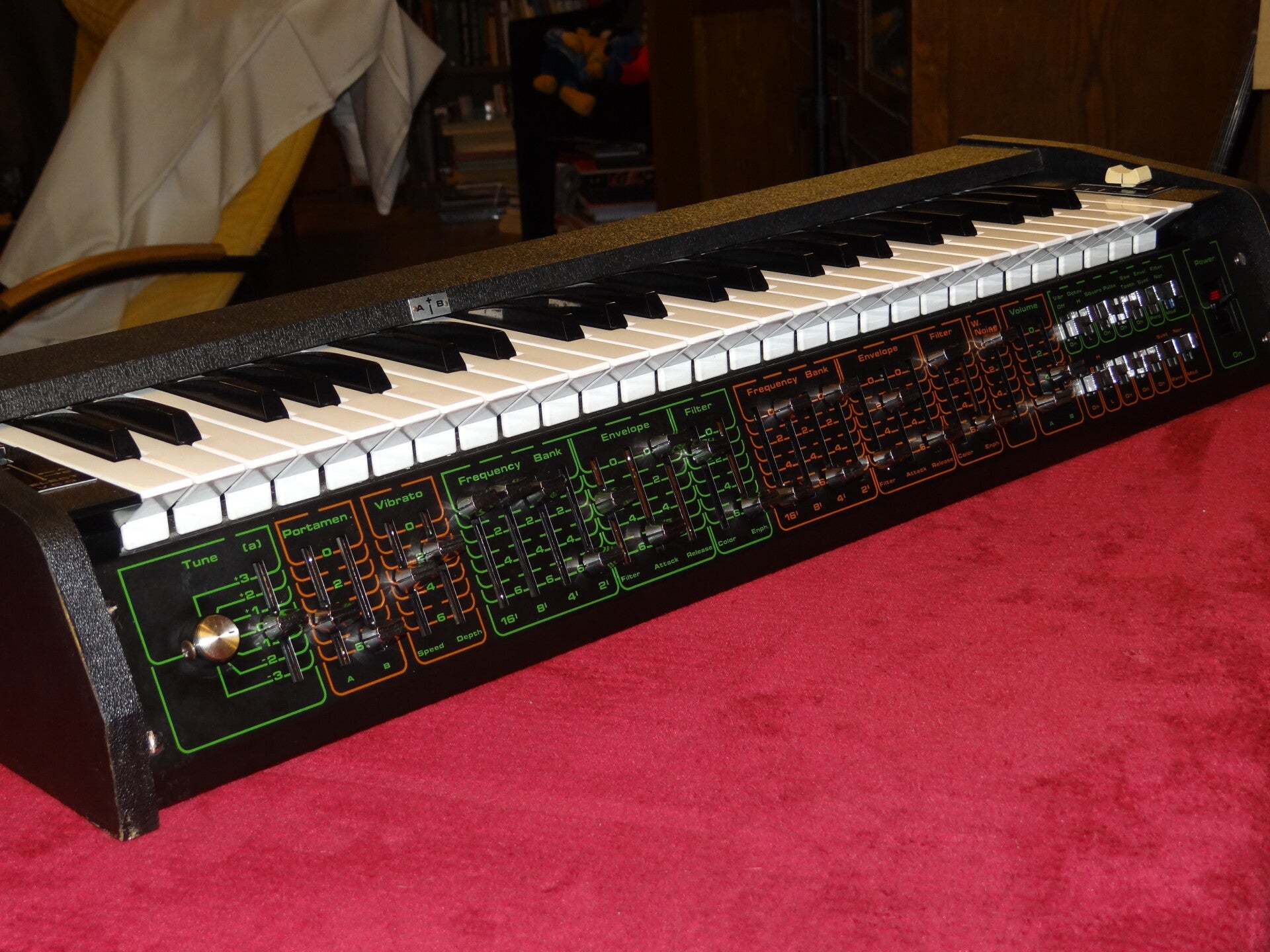
Crucianelli Compac Synth
A very rare little synth of which very little is known.
I suspect these never got properly produced and released on the market as the three examples I've seen barely work and having restored the one in the picture made clear it was either a production prototype or... they just gave up on it.
Video series can be found on my YT channel.
Schematics can be downloaded here.
THIS PAGE IS A WORK IN PROGRESS.
Simplistic, but Effective
Though there's nothing much special going on inside, no special oscillators or any custom IC's, the sound is very charming.
This is largely thanks to the ladder filters implemented and... dual voices, which can be layered or split on the keyboard. Something that sets this synth aside from most of its competitors.
To the left you can see the general block diagram of the synth. Click on the image to enlarge it.
I've edited it to be more accurate to the real-world thing. I'm not sure how accurate the diagrams I have are, but I've done my best to add missing details and notes so they're more understandable and use-able for repairs.
As you can see it has a fully dual-voice structure where everything is doubled up, sans two differences:
- voice A has an extra divider to switch from -3 to +3 semitones,
- voice B has a noise generator.
There's also separate outputs for A and B, so you could route them through separate FX for example.
The VCO
Things are kept as simple as possible and it reflects in the VCO. Crucianelli used a simple 4046 PLL, but with the actual phase-locked-loop unused. Instead the internal VCO of the chip is (ab)used as the main VCO. The keyboard is basically a giant resistor voltage divider that drives the RC based VCO in the 4046.
That also means 2 trimmers per key! As you can imagine this was really "fun" to get in tune...
To the left you can see the VCO schematic and I will say it's quite ingenious in its simplicity. I may just base some of my own designs on this :)
One clever thing is the combined portamento and crude sample & hold for the control voltage coming from the keyboard ('A' on the schematic).
The voltage goes through a 500k potentiometer and then to the VCO-in of the 4046, but... with a 470nF capacitor to ground. This creates a (dis)charge path through that 500k pot, creating a portamento effect. However when there's no key pressed there's no connection at all on point 'A', thus the capacitor has nowhere to discharge through (aside from the extremely high impedance input of the 4046, which can be ignored).
This means the capacitor will hold whatever voltage was last send from the keyboard, i.e. it will "sample & hold".
Another thing I noticed is that the 'demodulator out' signal from the 4046 is send to the VCF control voltage section ('M100A' on the schematic), so I think this synth actually has some crude keyboard tracking as this output of the 4046 is "a source follower output of the VCO input voltage". The 10k resistor to ground is required for this output to function properly.

There's also something special going on with the capacitor side of the RC oscillator of the 4046. A clever little scheme to allow for voltage-modulation of the (dis)charge rates of the capacitors, thus creating a pitch modulation or vibrato effect.
The output of the 4046 VCO goes through a 4-bit binary counter, which acts as a 4-octave divider that combined with diode logic creates a divide-by-N, a common trick used in timers for example. In this case it's to create exact 3 semitone offsets in the frequency.
Then finally there's a classic octave divider that generates the 4 octaves that get turned into square waves, pulse waves and sawtooth waves. There's a waveshaper for each octave, so you can freely mix the 4 octaves of waveforms using the footage sliders. Drawbar organ style, basically.
The Waveshapers
For each footage/octave there's a waveshaper to generate pulse and sawtooth waveforms besides the square waves already coming from the octave divider.

WIP
The VCF
Ah yes, the venerable ladder filter, glorious in its sound.

WIP
The VCA and Envelope
WIP




